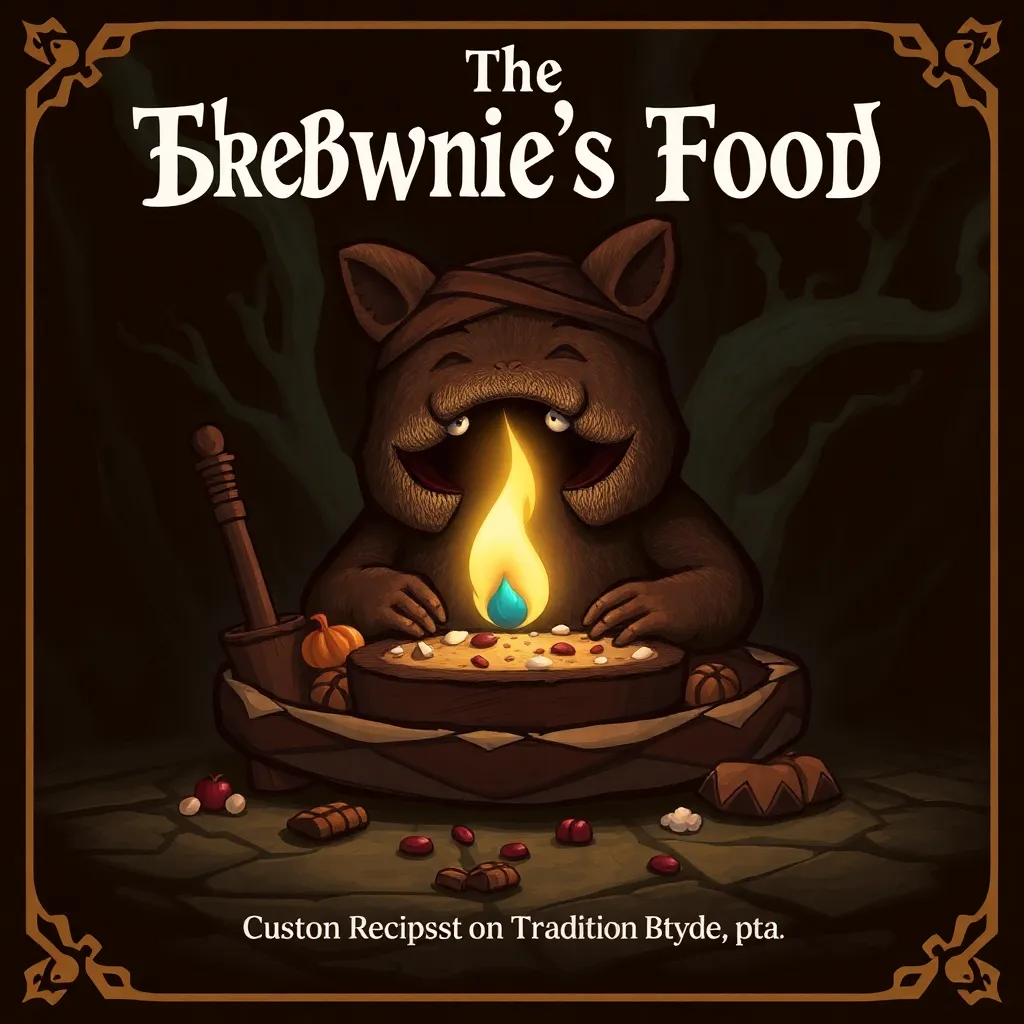The Brownie’s Food: Offerings & Recipes from Tradition
I. Introduction to Brownies
Brownies, a beloved dessert in American cuisine, boast a rich history that dates back to the late 19th century. The origins of brownies are somewhat murky, with various accounts claiming different origins. Some suggest that they were created by a chef in the United States who accidentally combined a chocolate cake recipe with a cookie recipe, resulting in the delightful treat we know today.
Over the years, brownie recipes have evolved significantly. Initially, they were simple chocolate confections, but as culinary techniques and ingredients became more varied, so did the brownie. Today, brownies come in all shapes, sizes, and flavors, embracing both traditional and innovative approaches.
Brownies hold a special place in American culture, often associated with childhood memories, family gatherings, and celebrations. Their versatility and ease of preparation make them a popular choice for both novice and experienced bakers alike.
II. Classic Brownie Recipes
A. Traditional chocolate brownie recipe
A classic brownie recipe typically includes the following ingredients:
- 1 cup unsalted butter
- 2 cups granulated sugar
- 1 cup brown sugar
- 4 large eggs
- 1 teaspoon vanilla extract
- 1 cup all-purpose flour
- 1 cup unsweetened cocoa powder
- 1/2 teaspoon salt
- 1 cup chocolate chips (optional)
To make the brownies, melt the butter and combine it with the sugars, then add the eggs and vanilla. Gradually stir in the dry ingredients until just combined, then fold in the chocolate chips. Bake at 350°F (175°C) for 20-25 minutes, or until a toothpick comes out with a few moist crumbs.
B. Variations of classic brownies (fudgy vs. cakey)
Brownies can be categorized into two main types: fudgy and cakey. Fudgy brownies are dense, rich, and moist, often containing a higher fat-to-flour ratio. Cakey brownies, on the other hand, have a lighter texture and resemble cake more than cookie, thanks to the addition of more flour and sometimes baking powder.
C. Notable regional differences in brownie recipes
Across the United States, different regions have their own unique takes on brownies. For example:
- In the South, pecan brownies are a popular variation, incorporating chopped nuts for added texture.
- The Midwest often features cream cheese swirled brownies, combining tangy cream cheese with rich chocolate.
- In New England, the addition of maple syrup in brownie recipes adds a distinctive flavor profile.
III. Innovative Brownie Variations
A. Popular flavor twists (e.g., salted caramel, peanut butter)
In recent years, innovative flavors have taken the brownie world by storm. Some popular twists include:
- Salted caramel brownies, which combine rich chocolate with a gooey caramel layer and a sprinkle of sea salt.
- Peanut butter brownies, where creamy peanut butter is swirled into the brownie batter or used as a topping.
- Mint chocolate brownies, infused with mint extract or topped with mint frosting for a refreshing taste.
B. Alternative ingredients for dietary restrictions (gluten-free, vegan)
With the rise in dietary restrictions, many bakers have adapted traditional brownie recipes to cater to various needs. Some alternatives include:
- Gluten-free brownies made with almond flour or gluten-free all-purpose flour.
- Vegan brownies that use flaxseed meal instead of eggs and coconut oil in place of butter.
- Lower-sugar brownies utilizing natural sweeteners like honey or maple syrup.
C. Creative presentation ideas (layered brownies, brownie bites)
Presentation can elevate the enjoyment of brownies. Here are some creative ideas:
- Layered brownies, where different flavors are stacked to create a visually appealing dessert.
- Brownie bites, small square portions perfect for parties and gatherings.
- Brownie sundaes, topped with ice cream and whipped cream for an indulgent treat.
IV. Brownies Around the World
A. International interpretations of brownies
While brownies are quintessentially American, many countries have embraced their own interpretations. For instance:
- In Brazil, “brownie de chocolate” is often enriched with nuts and served as a sweet treat during festive occasions.
- In the UK, chocolate brownies are often served with clotted cream or custard to complement their richness.
B. Cultural adaptations and local ingredients used
Different cultures often incorporate local ingredients into their brownie recipes. For example, Mexican brownies may feature cinnamon or chili powder for a spicy kick, while Asian versions might use matcha or black sesame for unique flavors.
C. Comparison of brownie-like desserts globally (e.g., brookies, blondies)
There are several dessert variations similar to brownies, including:
- Brookies: A delightful combination of brownies and cookies, often featuring layers of each.
- Blondies: A vanilla counterpart to brownies, made with brown sugar and often containing chocolate chips or nuts.
V. Brownies in Modern Culinary Trends
A. The rise of gourmet brownies in bakeries
In recent years, gourmet brownies have become a popular trend in bakeries, with chefs experimenting with unique flavors, high-quality ingredients, and artisanal techniques to create decadent treats.
B. Influence of social media on brownie recipes and trends
Social media platforms like Instagram and TikTok have played a significant role in the resurgence of brownie popularity. Viral recipes and creative presentations inspire home bakers to try new flavors and styles.
C. The trend of brownie gift boxes and custom orders
As brownies continue to gain popularity, many bakeries now offer custom brownie gift boxes, allowing customers to select their favorite flavors and combinations as perfect gifts for any occasion.
VI. Tips for Perfecting Brownie Baking
A. Essential baking tools and equipment
To achieve the perfect brownie, it’s important to have the right tools, including:
- Mixing bowls
- Measuring cups and spoons
- Baking pan (typically 9×13 inches)
- Spatula for smoothing the batter
- Cooling rack
B. Key techniques for achieving the perfect texture
To perfect your brownie texture:
- Be careful not to overmix the batter, as this can lead to tough brownies.
- Use room temperature ingredients for better incorporation.
- Check for doneness a few minutes before the recommended baking time, as brownies continue to cook while cooling.
C. Common mistakes to avoid when baking brownies
A few common pitfalls to avoid include:
- Using expired ingredients, particularly baking powder or cocoa powder.
- Not greasing the pan properly, which can lead to sticking.
- Opening the oven door too early, which can cause the brownies to sink.
VII. Pairing Brownies with Other Foods
A. Best beverages to serve with brownies (coffee, milk, wine)
When it comes to beverages that pair well with brownies, consider:
- Freshly brewed coffee, which enhances the chocolate flavors.
- Cold milk, a classic pairing that complements the sweetness.
- Red wine, particularly rich varieties like Cabernet Sauvignon, which can elevate the dessert experience.
B. Complementary desserts and sides (ice cream, sauces)
Brownies can be wonderfully enhanced with additional desserts and sides:
- Vanilla ice cream or whipped cream for a creamy contrast.



